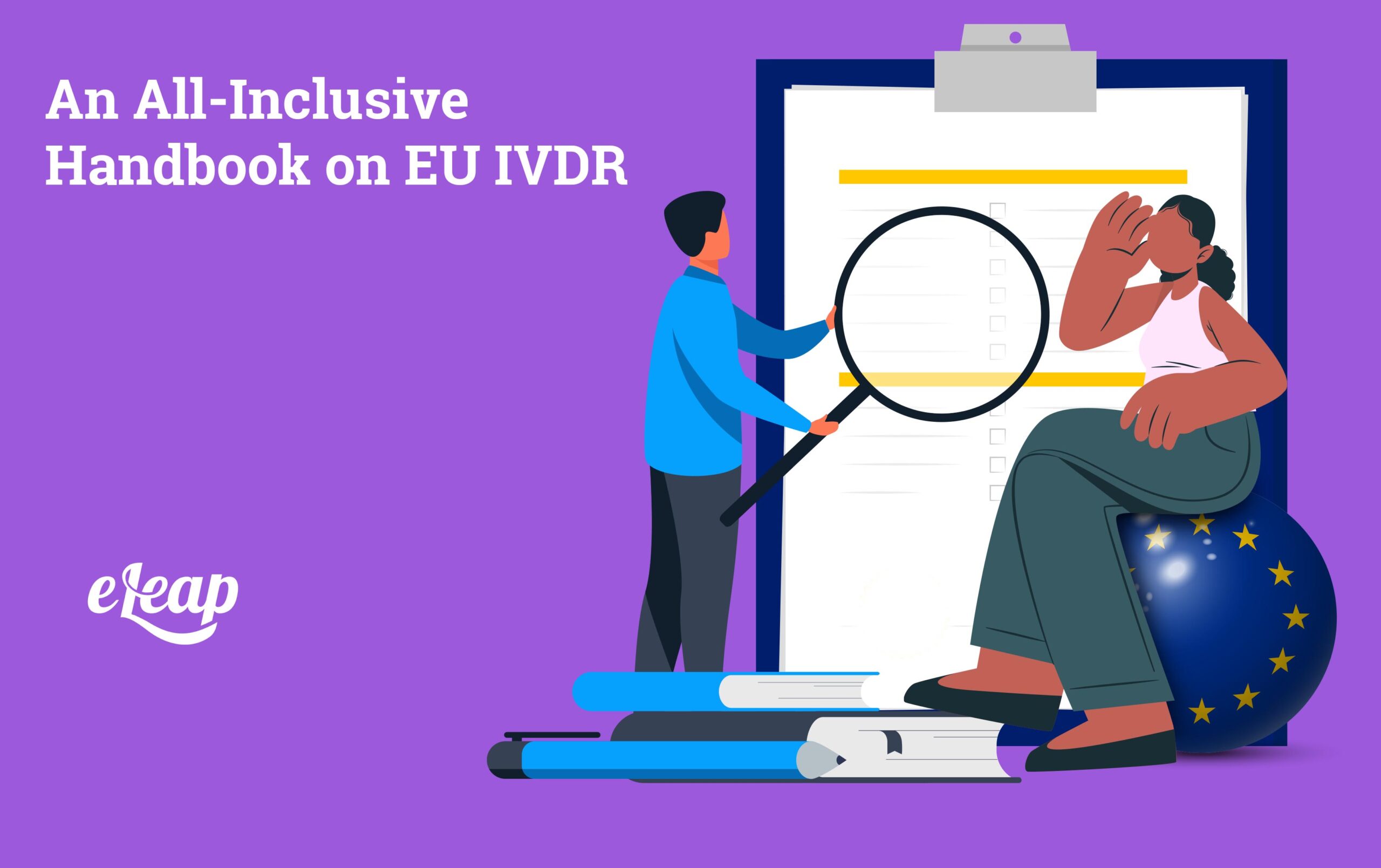An All-Inclusive Handbook on EU IVDR

European Union In Vitro Diagnostic Regulation is a structure that revolutionizes how in vitro diagnostic devices are assessed, authorized, and advertised in the EU. This is especially true in the ever-changing world of medical device laws. This article delivers a thorough overview of EU IVDR, emphasizing its main features, manufacturer implications, and practical applications to show how it affects the medical device sector.
Comprehending EU IVDR
Overview of EU IVDR:Within the European Union, the support and marketing of in vitro diagnostic devices (IVDs) are ruled by the EU IVDR, or European Union In Vitro Diagnostic Regulation. Significant improvements have been made to improve patient safety and guarantee the efficiency of diagnostic instruments. Replacing the previous In Vitro Diagnostic Directive (IVDD).
Principal Goals of EU IVDR: EU IVDR’s primary goals are to improve IVD evaluation and oversight. Increase transparency for end users and regulatory bodies, and improve traceability across the supply chain.
- Essential Elements of EU IVDR
- Tighter System of Classification
EU IVDR presents a new threats-based classification scheme for IVDs, classifying them into four risk groups (A, B, C, or D) according to their probable risks to users and patients.
Conformance Assessment methods: To assure compliance with safety and performance criteria, Notified Bodies examine conformance using more stringent methods.
Improved Post-Market Monitoring

Thorough Post-Market Surveillance (PMS): EU IVDR requires manufacturers to set up strong PMSs that gather and evaluate information on the effectiveness and safety of IVDs for the course of their lives.
Periodic Safety Update Reports (PSURs): Consistent proof of the device’s performance and safety must be provided by manufacturers, who must provide PSURs.
The introduction of Unique Device Identification (UDI): EU IVDR requires establishing a UDI system to guarantee device traceability across the supply chain and expedite the resolution of safety violations.
UDI Database: Creating a central European database for UDI data improves accessibility and transparency for the general public, regulatory bodies, and medical professionals.
Increased Ambit and Novel Entities
Expanded Regulation Coverage: The EU IVDR expands the regulatory footprint to encompass a broader array of devices. Including software and accessories linked to intelligent devices.
New Tasks for Economic Operators: To promise accountability and compliance. The regulation has additional responsibilities on importers, producers, distributors, and authorized representatives.
Manufacturers’ Repercussions: Influence on Small and Medium-Sized Businesses (SMEs)
Difficulties facing SMEs: For SMEs, compliance with EU IVDR presents unique problems, such as higher financial costs. Resource limitations, and the requirement for a thorough grasp of the regulatory environment.
Strategic Planning: To maintain compliance with EU IVDR without sacrificing innovation, SMEs must participate in strategic planning to manage its intricacies. They can seek assistance from consultants or industry associations in this regard.
Working together and communicating
Bolstering Partnership with Notified Bodies: To expedite conformance evaluations, producers need to forge robust partnerships with Notified Bodies early in the development phase, especially in light of the EU IVDR’s increased scrutiny.
Good Communication with Supply Chain Partners: To guarantee a seamless transition to IVDR compliance. Improved communication and cooperation with supply chain partners, such as authorized representatives and distributors, are crucial.
Real-World Examples of EU IVDR Impact:
Example:1 Molecular Diagnostic Test Manufacturer
Assume the role of a company that produces molecular diagnostic tests for infectious diseases. The test may be reclassified to a higher risk class under IVDR, requiring a thorough reevaluation of its safety and performance standards compliance. Furthermore, the manufacturer must build a solid post-market surveillance system to track the test’s effectiveness in real-world scenarios.
Example 2: Diagnostics Companion
Adherence to EU IVDR is crucial in companion diagnostics, which finds biomarkers to direct the use of particular treatments. Manufacturers must establish their devices’ clinical validity and analytical performance. Through comprehensive documentation and traverse the increasingly rigorous conformity evaluation procedures.
Time of Transition and Deadlines
Restricted Transition Period: The little time manufacturers have to adapt their procedures, records. And quality control systems makes the shift from IVDD to EU IVDR extremely difficult.
Increasing Workload for Notified Bodies: During the transition phase, Notified Bodies are dealing with a rise in workload, which could cause delays in conformity assessments. Manufacturers must make appropriate plans to prevent delays in releasing their goods onto the market.
- The Best Methods for Adherence
- Early Planning
- Carrying Out Gap Assessments: Manufacturers should conduct thorough gap assessments to pinpoint areas where their present procedures and records do not meet EU IVDR regulations.
Communicating with Alerted Parties: A seamless transition depends on early contact with Notified Bodies for guidance on conformity assessment procedures and regulations.
Comprehensive Documentation
Thorough Technical Documentation: Manufacturers must guarantee the correctness and completeness of technical documentation, presenting unambiguous proof of compliance with EU IVDR regulations.
Combining the UDI System: Early implementation guarantees timely compliance with EU IVDR’s unique identity standards.
Conclusion
In summary, the European Union’s In Vitro Diagnostic Regulation (EU IVDR) aims to improve patient safety and guarantee the efficacy of diagnostic instruments by enacting a paradigm shift in the regulation of in vitro diagnostic equipment. To achieve compliance, manufacturers must manage the new framework’s intricacies, modify their procedures, and cooperate reasonably with regulatory organizations.
Examples from real-world situations highlight the concrete effects of EU IVDR on particular diagnostic devices and the necessity of preventative action to guarantee a seamless transition. The ultimate objective is to improve the safety and dependability of in vitro diagnostic devices. Inside the European Union as the industry adopts these modifications.